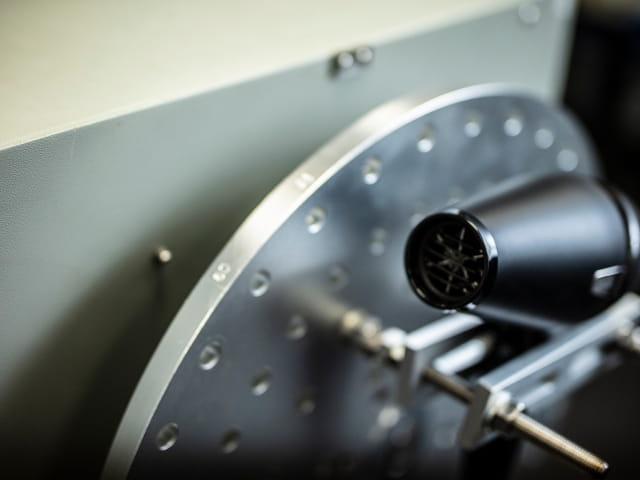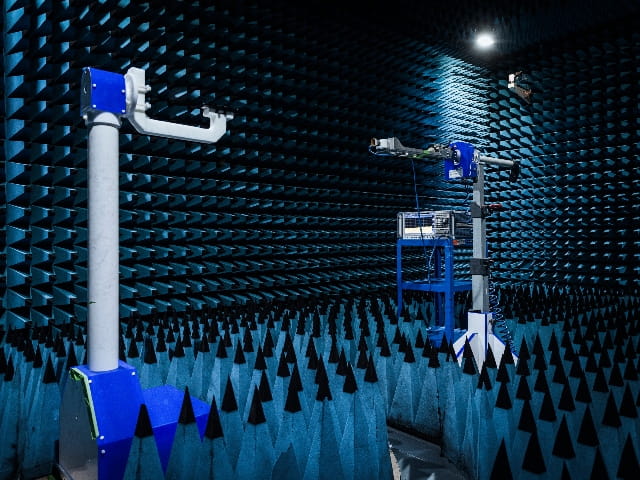Understanding Electrical Product Safety Standards
Manufacturers of electrical and electronic products and devices often presume the compliance journey is going to be fraught, wrongly believing electrical product safety standards are a bewildering compilation of rules and regulations. Element believes this negative narrative can be avoided by taking a closer look in advance at the testing and certification process and some of the more common pitfalls of safety and electrical products from batteries, consumer products and appliances to commercial products, medical devices, laboratory equipment and industrial equipment.

Understanding the Testing and Certification Process
Failing to understand these testing and certification drivers early in a product's lifecycle can result in costly delays. If you are a manufacturer of consumer, electrotonic, medical devices, or laboratory equipment our Technical Manager for Product Safety, Neil Sulem, helps you navigate the testing and certification process to ensure your products achieve market access. Watch on-demand now.Testing and certification drivers behind safety testing and certification of electronic and electric products
Most companies test their products to a publicly available standard and involve third parties in the testing and assessment process for one of four reasons: country or regional legal requirements, market expectations, specific customer requirements, or a manufacturer’s in-house quality procedures.
Whilst third-party approval is generally not required by UK or EU legislation for electrical safety testing, some legislation does require notified or approved body involvement for certain high-risk products such as medical devices. Third-party approvals are also needed where harmonized or designated standards have not been applied in full for high-risk machinery and for certain aspects of radio equipment approvals.
Country or regional legal requirements for electrical product safety standards
The most common driver for electrical product safety testing is when a country sets out the requirement or option to use a standard in the legislation to reduce the risk that unsafe products are made available on the market. Mandatory third-party testing or certification requirements are usually reserved for products that are perceived or have been shown by historical data, to carry a high risk of injury or damage to property if not designed correctly.
In Europe and the UK, the use of standards is primarily voluntary but to effectively demonstrate that the requirements of the legislation have been met, the use of standards is often considered necessary due to the vague nature of that legislation.
Market expectations for electronic goods
Even when not required by legislation, voluntary standards or certification marks can still be necessary due to them being not only recognized but expected by specific industries or consumers. A clear competitive advantage can be achieved by adhering to this type of standard with it even becoming difficult to sell the product if the certification is not clearly displayed on the packaging or marketing material.
Demonstrating that a product meets a specific standard can inspire genuine confidence. However, the market may be aware of these standards or certifications from seeing them applied to higher-risk products without understanding if they are necessary for the product in question. An example of this is the Nationally Recognized Testing Laboratory (NRTL) certification used in the USA. This is often presumed to be required for all electronic goods placed on the US market but is only acquired in limited circumstances, such as for electronic equipment used in the workplace or equipment used in hazardous areas.
Specific customer requirements for electrical product safety standards
Organizations will often stipulate in their purchasing contracts that the products they purchase must meet the requirements of a specific safety standard or have been tested and approved by an accredited third party, to ensure that they are buying safe electrical products.
Internationally, the approval required is usually a CB certificate or a test report from a 17025 accredited testing laboratory. In the USA or Canada, the requirement is normally that the product is certified or listed by an NRTL.
Manufacturers’ in-house quality procedures
Organizations may choose to maintain quality and protect their brand by dictating in their quality procedures that the products they design, or use should meet relevant national or international safety standards and that third-party testing is carried out for electrical product safety. Routinely including this in product development and purchasing procedures can prevent a costly incident or brand damage due to unsafe products being placed on the market as a result of shortcuts taken due to the cost and time pressures faced by most companies.
Whatever reason it is needed, the testing and certification process can be split into the following six phases:
1. Pre-testing or product development
Ideally, a product’s compliance journey should start when the specifications are being defined during the product design stage. The technical standards for the product should be identified so that components such as software enclosures, circuits, and controllers can be designed according to the standard and suitable materials selected.
At this point in the product’s development, Element can provide advisory services to help identify the standard and regulatory requirements based on the product details and its potential markets. Our team of electrical product safety experts can provide a compliance roadmap to enable the manufacturer to know where they are going at the start of their journey.
The product designers should have copies of the relevant standards, and an appropriate person within the company should understand the testing and certification or regulatory requirements that need to be met. When circuit diagrams and detailed product specifications and drawings have been produced, these can then be submitted to Element for review to identify any potential areas for concern that might result in failures during the final product testing and assessment stage.
Additional testing and assessment can also be undertaken on early samples of a product to verify that it meets potential problematic areas of a standard such as instruction and marking requirements, creepage and clearing distances, and stability requirements, or to ensure that materials have appropriate flammability resistance.
2. Requesting the quote(s) for testing and certification
When a manufacturer is ready to request a quote for a testing and certification project, they will need to be ready to provide details about the product and its intended use. At a basic level, this will include its overall size and weight as well as electrical or other ratings. Often an instruction manual or datasheet will be enough to get the process started but ideally, the manufacturer needs to provide as much information as possible. This avoids assumptions having to be made which could result in increased quote costs or project delays.
Element will work closely with the manufacturer to determine the appropriate standards, certifications, approvals, or other services that will be required. These discussions will focus on the following factors which will affect the quote:
- The standard or standards that will be applied
- The product’s potential end markets so the appropriate national differences can be considered
- If certification or notified/approved body approvals are needed, or if a 17025 accredited report will be sufficient
- If the product may be used outdoors or in wet or dusty areas, then ingress testing may be required to ensure water or dust does not enter the product, or the entry of water or dust does not compromise the safety of the product.
- If safety critical components come with appropriate approvals or if these components require specific testing.
- How complex the product is and if it has any specific features or accessories. A complex product with a range of PCBs and hazards, such as lasers, pressure vessels or high voltages, will require more time and therefore more cost to fully evaluate
- If the product depends on software for safety, this will also need to be assessed
- How the product is powered as mains and batteries supplied equipment may require more testing than DC-supplied equipment due to greater hazards
- If testing is needed to be undertaken onsite due to specialist equipment required to operate the product, or for large products that are difficult to transport, allowance may need to be made for the test engineers’ travel expenses.
3. Preparing for electronic product testing
Once the quote has been received, the manufacturer should have an initial list of documentation which will need to be provided in advance of the testing. If not compiled already, this is now the time to get these documents together. It will typically include:
- the completion of application forms,
- circuit diagrams,
- engineering drawings and block system diagrams,
- rating label drawings and details about warnings and markings that will be on the product,
- components lists,
- details about alternative components, and approval certificates for polymeric materials used for enclosures and PCBs,
- datasheet and approval certificates for critical components,
- installation and user instructions,
- and where applicable, supporting reports for aspects of testing that are required but may not have been covered in the quoted test program, for example, software, laser, or ingress protection assessment test reports.
By this point, Element will usually have indicated the number of samples that will be required and if they need to be set up to operate in a specific manner. If additional samples can be provided, this can allow testing to be conducted in parallel to help reduce test times or can reduce the chance of delays if a sample is damaged during testing or ceases to work for any reason. The manufacturer will also need to provide any specialist equipment or accessories that allow the product to operate as intended.
Where safety critical components are not able to be supplied with the appropriate approvals and additional testing is required, separate samples of these components will also be necessary. If multiple suppliers for certain safety-critical components are going to be used, samples from these suppliers may also be required.
4. Running the testing
At this stage, the product will be assessed against all relevant requirements detailed in the safety standards that have been identified as applicable. The safety standards will consider the hazards associated with the specific product type, considering where it is intended to be used and who it may be used by.
Whilst there may often be a focus on risks from electrical hazards, test projects will generally seek to address all hazards related to the product, such as fire, mechanical, thermal, radiation and acoustic hazards.
During the testing, compliance with the standard is demonstrated through the following three key areas: inspection and measurement, review of documentation, and dynamic testing.
The inspection and measurement of the product will consist of activities such as a review of the earthing system where applicable, ensuring components are being used correctly, measuring creepage and clearance distances, ensuring no hazardous parts are accessible and software evaluations.
During the documentation review, the instruction manual will be assessed to ensure it meets the requirements of the standards and critical component information will be examined to ensure that the components used have the appropriate approvals and are being used in line with their intended use.
The dynamic testing will include aspects such as ingress protection testing, thermal testing to ensure key parts of the product are not exceeding allowed temperature limits, input testing to ensure the measured current or power is as per the markings on the equipment, touch current tests to ensure that no high currents are accessible to the user, and testing to ensure the equipment remains safe under fault conditions.
After the testing assessments and documentation reviews have been completed, the test engineer responsible for the project will write a report indicating which clauses are applicable and hopefully that all relevant clauses have passed. Where appropriate, comments will also be included. This report will then be reviewed by another authorized reviewer at Element. Element will keep copies of all test results, worksheets, and documentation supplied in the project file, as required by the IEC and UKAS accreditation.
Where non-compliances to the requirements of the standard are identified, the test laboratory will issue a findings email detailing the non-compliances and allowing the opportunity for them to be rectified. This may require an update to the product design, the provision of additional documentation, or an update to the product manual. Where testing cannot continue, the manufacturer will be provided with a timeframe of normally ten days in which revised samples, information, or documentation attempting to rectify the noncompliance cases should be received by the laboratory before the project is closed. If more time to resolve any non-compliance is required, this should be discussed with the laboratory as soon as possible.
If additional testing time is required due to failures or product specifics that were not known at the quoting stage, this can be agreed via a change order request which will need to be approved by the manufacturer prior to any additional testing being undertaken.
5. Certification review
After the report is written, The test laboratory will submit it to the certification department for a final review along with any additional supporting documentation. If a quality audit of the manufacturing location is required as part of the certification scheme, this will also be organized, and an audit report produced. Successful completion of this process will then result in the certification being issued.
6. Manufacturer’s post-testing and certification obligations
Where audits of manufacturing locations are required, surveillance audits or follow-up inspections will be needed at a frequency determined by the certificate scheme or body. The manufacturer has a duty to keep abreast of any changes to the applied standard or legislation and evaluate if any of the changes will require additional testing or updates to documentation for as long as the product is still being manufactured.
Certification bodies may also send out notices when standards are updated, detailing these changes and whether additional evaluation is required. Under certain schemes where non-certified critical safety components have been used, these will have to be retested annually.
Product design, component or material, and supplier changes will also need to be monitored and testing and identification updated where changes are notable. Updates will be required if the names and addresses listed on the certificates are changed. In essence, the compliance file for a product should be treated as a living set of documents until that product ceases to be manufactured or placed on the market.
Common pitfalls that cause product delays
Surprisingly, the testing stage of a project is not where Element sees most project failures. Whilst product redesigns due to test failures can cause significant delays, the most common reasons relate to documentation or administrative issues.
Missing or incorrect documentation is the most frequent cause of non-compliance. Application forms are often provided with the incorrect product name or model and whilst this may seem like a minor issue, it can take time to confirm the correct names and model numbers to update the reports. These then need to be sent through the review process again.
Declared electrical ratings are also frequently found to be incorrect or different from what is marked on the product or in the user manuals. Circuit diagrams and detailed design drawings are often missing for bought-in items without approvals, such as motherboards. As manufacturers often find it difficult to source this information, it should be considered during the design phase of the equipment when selecting the components to ensure suppliers have enough time to produce this information prior to the final product safety testing.
Instructions are a key part of the assessment, to allow both the test engineer and users an understanding of the product and to inform users about residual risks or limits of how the equipment should be used. Most standards include specific requirements on what information is needed to be communicated to the user and in what format. This is a key area that can delay projects and it is very common that either instructions are not received or those received have not been written considering the requirements of the standard. Whilst this type of issue is fairly simple to rectify as standards are quite clear on instruction manual requirements, it can be a time-consuming process.
Another simple-to-fix but common cause for delays relates to incorrect markings, warnings, and symbols. Standards are usually explicit in relation to the symbols and markings required on products and a simple checklist can be produced to ensure that the product is supplied with these. Where symbols are used, they should be in the appropriate format as referenced in the standard. The markings should also be sufficiently legible, durable, and indelible. Straightforward rubbing tests to demonstrate appropriate durability are included in the standard.
Where approvals for critical components and materials are supplied, the limits of use should match with the product’s limits. Indoor-only power supplies, for example, cannot be used with products that are intended to be used outdoors or if the product is intended for environments over 40 degrees centigrade, then the approvals for the components also need to show that they are intended to operate in the same environment.
Additionally, it should be noted that national deviations also apply to some component approvals which means that power supply and battery approvals need to have been approved for the same national deviations as the product.
To minimize the risk of delays, this information needs to be supplied on time and be available prior to the start of testing. If requested, Element will try to work with incomplete information and begin areas of the project that are not reliant on the missing data, but this approach will significantly increase the risk of delays.
Reduce the risk of delays
Finally, complete and representative samples need to be available in sufficient time to allow the testing to be scheduled in accordance with any agreed timeframes. Equipment also needs to be in the appropriate state and provided with specialized supporting equipment or consumables needed to operate or verify the product under test. The risk of delays can be reduced by supplying spare product samples and safety-critical components, such as fuses, thermal fuses, thermal cut-outs, and transformers.
The reasons for delays caused by test failures can be varied and often depend on the product type or standard. Some of the more common or notable issues seen at Element include:
- insufficient creepage and clearance distances,
- heating test failures,
- battery charge protection failures are caused by batteries that don’t stop charging at the battery manufacturer’s specified temperature limits,
- failed stability force or tilt tests,
- ingress and enclosure test failures either due to inherent design, incorrect tolerances being specified, incorrect assembly of samples, or the requirements to condition the samples prior to testing have not been taken into account during the material selection or design phase.
Understanding electrical product safety approval certifications such as the IECEE CB scheme
There are many certification schemes available, but arguably the most important one for electrical product safety approval certification is the IECEE CB scheme which is widely seen as the most cost-effective way to demonstrate that a product meets the safety requirements for the majority of international markets.
The CB scheme is an international certification scheme that allows international mutual acceptance of test reports and certificates between various member National Certification Bodies (NCBs). This means a manufacturer can obtain one test report which can then be used to get local certifications in any of the 54 member countries without the need for time-consuming, costly, and duplicate or additional testing in each country. The scheme is managed by the IEC and based on the use of IEC international standards that can be readily accessed and accepted in international markets.
The process to secure a CB certificate is as follows and it is worth noting that there is no requirement for an audit of the manufacturing location:
- An application is made to the National Certification Body (NCB) through the submission of an application form.
- Then the NCB will process the application and assign one of its CB Testing Laboratories (CBTL)
- You will then submit a representative sample of your product and the relevant documentation (e.g. circuit diagrams, component lists and approvals, instruction manual, etc.) to the CBTL.
- The CBTL will carry out the testing and assessment of your product to the relevant standard which is within the IECEE CB scheme, including any declared national differences where requested, and issue the test report to the NCB.
- The NCB will then review and validate the test report and on completion of a successful review, the NCB will issue the CB test certificate and report to you.
The certificate and report can then be submitted to other recognized NCBs to gain local certifications and provide evidence for retailers and other key parties that the product design meets the safety or other requirements of the relevant standards.
Element has six CB Test Laboratories specializing in electrical product safety testing, two in the United Kingdom, two in the USA, and two in China. Under the scheme, Element offers testing and certification for 8 IEC categories, including Batteries, EMC, Household, ITAV, Electronics, Office Equipment, Measuring Equipment, and Medical, covering standard series such as:
- Audio/video, information, and communication technology equipment (IEC 62368), including
- Domestic appliances (IEC 60335 series)
- Laboratory and measurement equipment (IEC 61010 series)
- Batteries (IEC 62133 series)
- Medical devices (IEC 60601 series)
- EMC (IEC 60601 and IEC 61326)
Through Element’s certification services, manufacturers can access all the major international electrical safety certification schemes, including the IECEE CB Scheme (operating in over 50 countries), CE marking (Europe), and NRTL certification (North America).
For more information about our electrical safety testing and certification services, please contact our experts
Find related Resources
Related Services

IECEE CB Scheme & Approvals
As a National Certification Body (NCB), Element can test your products under the IECEE CB Scheme and can provide internationally recognized certificates.

Electrical Product Safety Testing, Why Do So Many Products Fail?
Read our guide to learn our helpful tips and ensure your products are compliant first time.

CE Marking for the European Union
Element supports companies from start to finish to help them negotiate European Directive standards and achieve CE Marking on electrical products.

Product Certification & Approvals
Element has a dedicated team providing ISO 17025 accredited Certification Services from offices across the globe.



